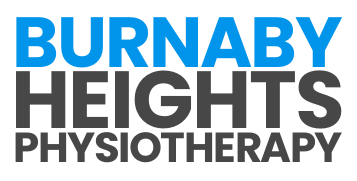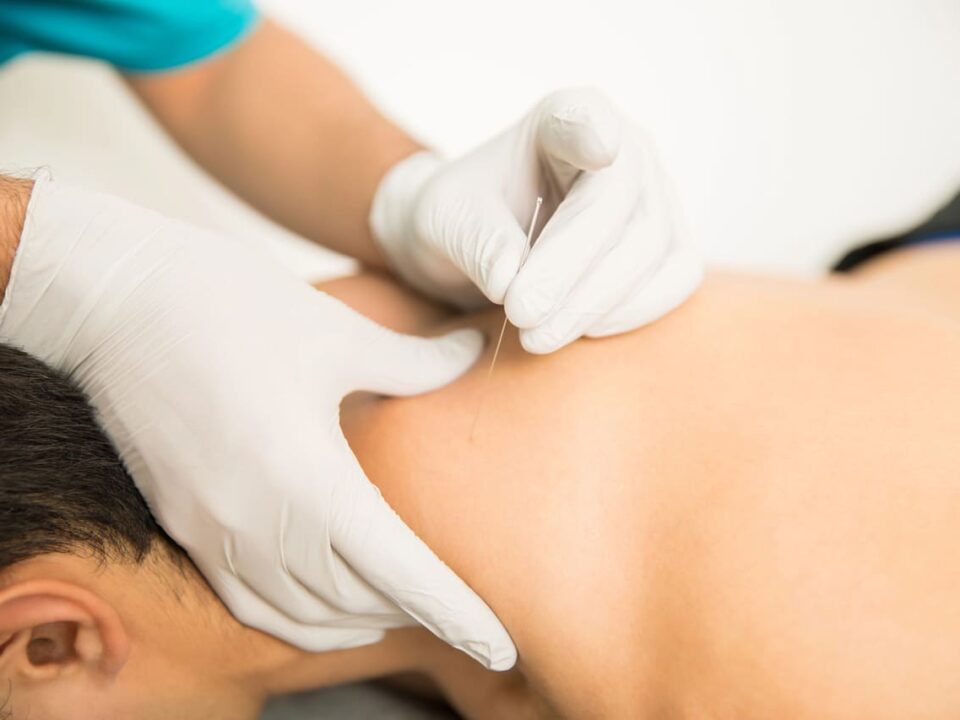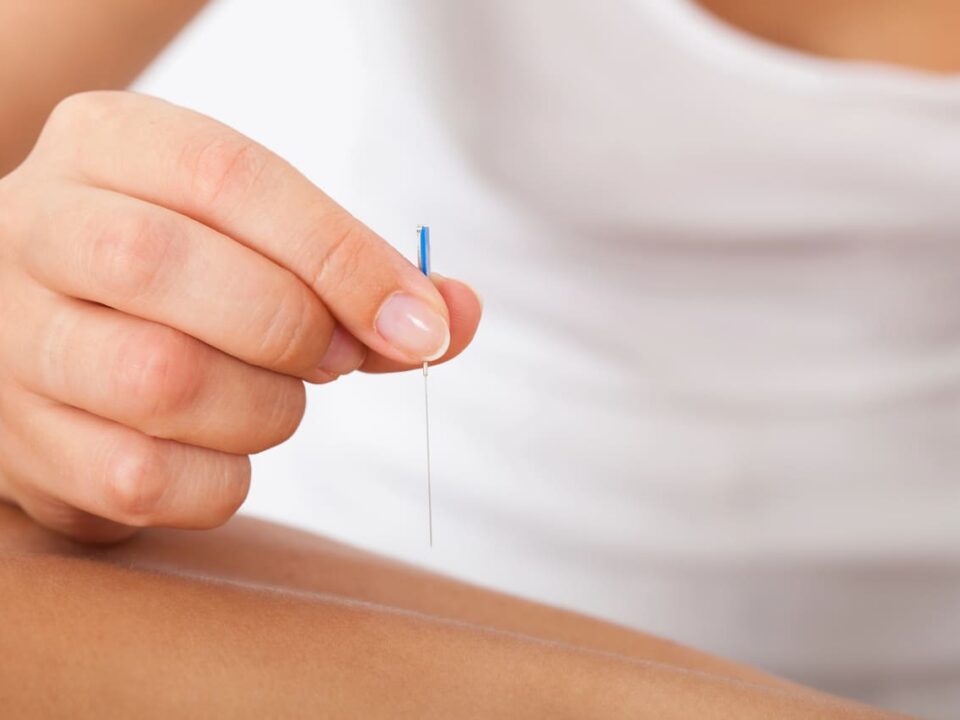
Tips for Supporting Physiotherapy: Lifestyle Changes, Daily Habits, and More
July 18, 2025
How Physiotherapy Supports Fitness: Tailored Plans for Optimal Health
August 15, 2025Acupuncture and dry needling are both popular therapeutic practices that utilize needles to promote recovery and alleviate pain, yet they differ significantly in their origins, techniques, and applications. These methods are often confused due to their use of similar tools, but each has distinct principles and treatment goals. In this blog, we will delve into the key differences between acupuncture and dry needling, exploring their techniques, applications, philosophies, and more. By understanding these differences, individuals can make informed decisions about which treatment may be best suited for their needs, enhancing their path to better health.
Understanding the Differences Between Acupuncture and Dry Needling
Acupuncture and dry needling are often compared due to their use of needles, but they have different historical backgrounds and purposes. Here are the key differences that set them apart:
- Origin: Acupuncture is rooted in Traditional Chinese Medicine (TCM) and has been practiced for thousands of years. Dry needling, on the other hand, is a more modern technique developed within the last century, primarily in Western medicine.
- Training: Acupuncturists typically undergo extensive training in TCM, which includes a comprehensive understanding of holistic health. Dry needling is often practiced by physiotherapists and other healthcare providers with training focused on musculoskeletal anatomy and pain management.
- Intent: The primary goal of acupuncture is to balance the body’s energy systems and promote overall well-being. Dry needling aims to release muscle knots and relieve specific areas of pain and tension.
- Treatment Areas: Acupuncture can be applied to over 360 points on the body, addressing a wide range of health issues. Dry needling targets specific muscle groups, focusing on localized pain relief.
- Cultural Context: Acupuncture has deep cultural and historical significance in many Asian cultures. Dry needling is primarily practiced in Western countries and lacks the cultural context of acupuncture.
- Duration of Practice: Acupuncture sessions often last longer, typically 30-60 minutes, while dry needling sessions can be shorter, focusing on specific problem areas.
Both acupuncture and dry needling offer unique benefits, making them suitable for different types of health concerns. Understanding these distinctions can help individuals choose the right therapy for their specific needs.
How Treatment Philosophies Between Acupuncture and Dry Needling Differ
The philosophies behind acupuncture and dry needling reflect their origins and treatment philosophies. Acupuncture is rooted in Traditional Chinese Medicine (TCM) and revolves around the concept of balancing the body’s life force energy, known as “qi.” Practitioners believe that this energy flows through pathways in the body called meridians, and any blockages or imbalances can lead to illness. Acupuncture aims to restore balance by stimulating specific points along these meridians to promote recovery.
In contrast, dry needling is grounded in Western medicine and focuses on the musculoskeletal system. It targets myofascial trigger points, which are tight bands of skeletal muscle. The primary goal of dry needling is to release these trigger points to alleviate pain and improve range of motion. While acupuncture considers the body as an interconnected whole, dry needling is more localized, concentrating on specific areas of dysfunction.
These differing philosophies highlight the holistic nature of acupuncture and the more targeted, symptom-focused approach of dry needling. Understanding these foundational differences can help people choose a treatment aligned with their health beliefs and needs.
Acupuncture vs. Dry Needling: How the Techniques Differ
The techniques used in acupuncture and dry needling differ significantly, reflecting their distinct goals and methodologies. Here’s a closer look at how they compare:
- Insertion Method: Acupuncture needles are inserted at various depths depending on the treatment goals and are often left in place for a longer duration. Dry needling involves quick, repeated insertions directly into muscle trigger points.
- Needle Manipulation: Acupuncturists may use gentle manipulation techniques to stimulate energy flow. Dry needling involves more aggressive needle manipulation to provoke muscle twitch responses.
- Needle Gauge and Length: Acupuncture typically uses finer needles, whereas dry needling may employ thicker needles to effectively penetrate muscle tissue.
- Treatment Focus: Acupuncture treats the body holistically, often addressing multiple symptoms in one session. Dry needling is highly targeted, focusing solely on muscular issues.
- Client Experience: Acupuncture is generally a more relaxing experience, often involving calming techniques. Dry needling can be more uncomfortable due to the direct muscle targeting.
- Additional Techniques: Acupuncture may incorporate other TCM techniques like moxibustion and cupping. Dry needling is often combined with other physiotherapy modalities.
Both techniques have their specific applications and can be effective in their respective areas. Understanding the methods involved can aid in selecting the most appropriate treatment for individual conditions.
Treating Common Conditions: Acupuncture or Dry Needling?
Acupuncture and dry needling each have their strengths in treating specific conditions. Here’s an overview of what each treatment best addresses:
- Chronic Pain: Acupuncture is effective in managing chronic pain conditions like arthritis and migraines by promoting overall energy balance and reducing inflammation.
- Muscle Tension: Dry needling excels in relieving muscle tension and spasms, particularly in conditions like myofascial pain syndrome.
- Stress and Anxiety: Acupuncture is well-known for its ability to reduce stress and anxiety, enhancing relaxation and mental well-being.
- Sports Injuries: Dry needling is often used in sports medicine to treat acute muscle injuries and enhance muscle recovery.
- Digestive Issues: Acupuncture can help regulate digestive functions and alleviate conditions such as irritable bowel syndrome (IBS).
- Headaches and Migraines: Both acupuncture and dry needling can be effective, but acupuncture is often preferred for its holistic approach.
- Post-Surgical Recovery: Acupuncture may aid in post-surgical recovery by reducing pain and promoting recovery.
- Fibromyalgia: Dry needling can target specific muscle pain areas, offering relief to people with fibromyalgia.
Each technique has its place in therapy, providing targeted relief for a variety of conditions. Understanding which conditions each treatment excels at can guide better therapeutic decisions.
Is One Method Safer Than the Other?
Both acupuncture and dry needling are generally considered safe when performed by trained and certified practitioners. Acupuncture has a long history of safe practice and is associated with minimal side effects, typically limited to slight bruising or minor bleeding at the needle site. Dry needling may cause temporary soreness or muscle twitching, which are normal responses to the technique.
However, the safety of each method can depend on the practitioner’s experience. Acupuncture requires in-depth knowledge of TCM principles and anatomy to ensure needles are placed correctly. Similarly, dry needling demands a thorough understanding of muscle anatomy to avoid complications such as nerve damage or infection.
Ultimately, both treatments carry low risks when performed correctly, but the safety and comfort of the individual can be enhanced by choosing an experienced practitioner.
Are the Needles Used in Acupuncture and Dry Needling the Same?
While acupuncture and dry needling both use needles, there are differences in the types and usage of these tools:
- Material: Both techniques generally use stainless steel needles, but the quality and finish may vary depending on the manufacturer and practitioner preference.
- Gauge: Acupuncture typically employs finer needles, which are about 0.12 to 0.25 mm in diameter, designed to minimize discomfort during insertion. Dry needling may use slightly thicker needles to effectively penetrate muscle tissue.
- Length: Acupuncture needles vary in length, often ranging from 0.5 to 2.5 inches, depending on the treatment area. Dry needling requires longer needles, sometimes up to 5 inches, to reach deep muscle tissues.
- Sterility: Both acupuncture and dry needling require sterile, single-use needles to prevent infection and ensure client safety.
- Insertion Technique: Acupuncture needles are inserted with care to stimulate energy points without causing pain. Dry needling involves more aggressive insertion techniques to provoke muscle response.
- Handling: Acupuncture needles are often inserted and left in place, sometimes with gentle manipulation. Dry needling involves rapid insertion and removal to trigger muscle activation.
Understanding the differences in needle types and application can provide insight into the distinct experiences of each treatment.
Can You Combine Acupuncture and Dry Needling?
Combining acupuncture and dry needling in a treatment plan can be beneficial for addressing both holistic and specific health concerns. While each method has distinct applications, their complementary nature can enhance overall outcomes. Acupuncture’s holistic approach can provide a broader impact on stress reduction and overall well-being, while dry needling’s targeted technique can address specific muscular issues effectively.
However, it is crucial to consult with healthcare professionals who are trained in both methods to ensure safe and coordinated treatment. These professionals can design a customized plan that incorporates the strengths of each technique, maximizing therapeutic benefits. At Burnaby Heights Physiotherapy, our skilled practitioners can guide you through an integrated treatment plan that aligns with your unique health goals, ensuring a comprehensive approach to your well-being.
What to Expect During Sessions for Each Treatment
Experiencing acupuncture or dry needling involves distinct processes and sensations. Here’s what you can expect during each treatment:
- Initial Consultation: Both sessions begin with an assessment of your medical history and current symptoms to tailor the treatment to your needs.
- Acupuncture Session: You will lie down comfortably, and the practitioner will insert fine needles into specific points on your body. The needles may remain in place for 15 to 30 minutes.
- Dry Needling Session: The practitioner will target specific muscle groups, inserting and removing needles quickly to elicit a muscle twitch response.
- Sensation: Acupuncture is generally painless, with people often experiencing a mild tingling or warmth. Dry needling can cause brief discomfort or muscle twitching.
- Relaxation Techniques: Acupuncture sessions may include calming music or aromatherapy to enhance relaxation.
- Duration: Acupuncture sessions tend to last longer, around 30 to 60 minutes, while dry needling is typically shorter, focusing on specific areas.
- Post-Treatment: After both treatments, people may feel relaxed or experience mild soreness, which usually subsides quickly.
Understanding what to expect can help reduce anxiety and enhance the therapeutic experience, allowing you to benefit fully from each session.
Is One Method More Effective Than the Other?
The effectiveness of acupuncture versus dry needling largely depends on the condition being treated and the individual’s response. Acupuncture is highly regarded for its holistic approach, effectively addressing a wide range of chronic conditions, including pain, stress, and digestive issues. Its benefits extend beyond physical health, often improving mental and emotional well-being.
Dry needling, however, is particularly effective for musculoskeletal problems, such as muscle pain and tension. It offers rapid relief for specific issues by directly targeting muscle trigger points. While it might not have the broad applications of acupuncture, it excels in its niche of addressing acute muscle-related concerns.
Ultimately, the effectiveness of either method can vary from person to person. Some individuals may respond better to the holistic approach of acupuncture, while others may find quicker relief with the targeted interventions of dry needling. Consulting with a qualified practitioner can help determine the most suitable treatment for your specific needs.
Find the Relief You’ve Been Looking For
Acupuncture and dry needling each offer unique therapeutic benefits, with distinct techniques and philosophies. Whether you’re seeking holistic well-being or targeted muscle relief, understanding these differences can guide you in choosing the most suitable treatment.
You are encouraged to reach out to Burnaby Heights Physiotherapy for personalized guidance and care. Our team is committed to helping you achieve optimal health through tailored treatment plans that address your specific needs and goals. Contact us today to explore how acupuncture and dry needling can enhance your well-being.






